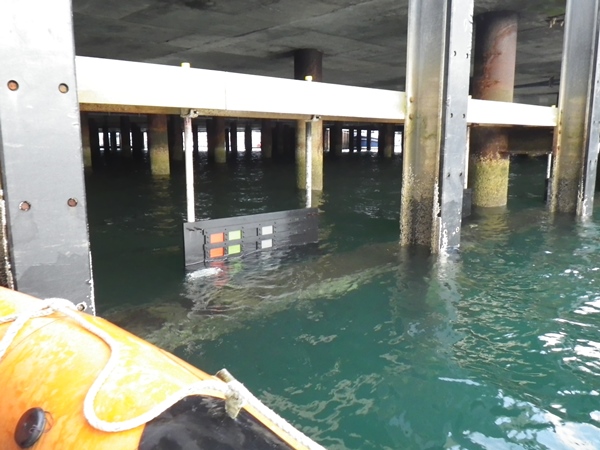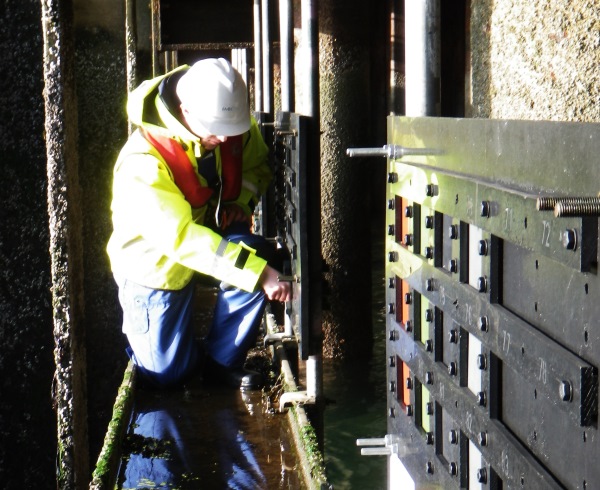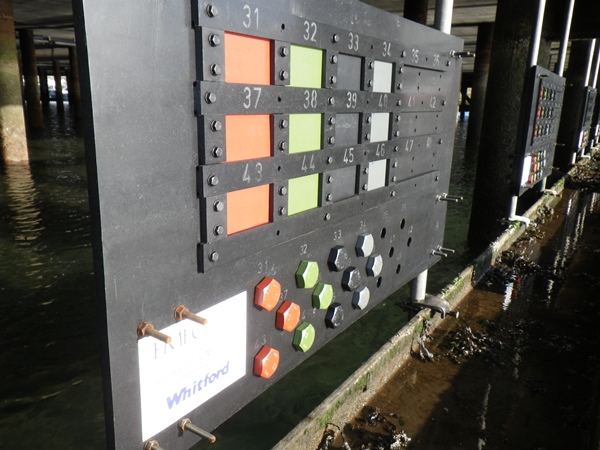The European Marine Energy Centre (EMEC) (Orkney, United Kingdom) and Canada’s Fundy Ocean Research Center for Energy (FORCE) (Parrsboro, Nova Scotia, Canada) recently launched a transatlantic joint project to examine regional differences in corrosion and underwater behavior of marine coatings.
Specifically, the groups are using existing technology test sites on both sides of the northern Atlantic Ocean—one at the Bay of Fundy between the Canadian provinces of New Brunswick and Nova Scotia, and the other at the Stromness Harbour in the United Kingdom—to study corrosion issues when turbines and sensor platforms are deployed at sea in rough conditions, according to project officials. The test facilities are being used to examine how marine coatings perform in both settings.1
Coatings manufacturer Whitford Worldwide (Elverson, Pennsylvania) is already gauging the performance of its coatings at both locations.
“Working in the Bay of Fundy, our sensor platforms have to operate in extreme high-flow conditions,” says Tony Wright, general manager of FORCE. “Our site experiences 14 billion tons of water every tide, moving at speeds above 20 km/h. Working in the world’s highest tides is a challenge, but also an opportunity for technologies to meet the ultimate test of durability.”

Project Origins
The collaboration traces back to a declaration made in 2011 by the prime ministers of the United Kingdom and Canada to work together on trade and innovation.
Innovate UK—the government-funded innovation arm of the United Kingdom—and the Offshore Energy Research Association (OERA) of Nova Scotia (Halifax, Nova Scotia, Canada) partnered with EMEC and FORCE to set up transatlantic projects. The initial research and development project, In situ Turbulence Replication Evaluation And Measurement (InSTREAM), was funded with financial contributions from agencies connected to both U.K. and Canadian governments. Led by Rockland Scientific (Victoria, British Columbia, Canada), InSTREAM is a research consortium comprised of six U.K. and Canadian commercial and academic entities.2 Its goal is to develop sensors and methods that can be used at tidal energy sites as well as laboratory-scale simulators, and measure turbulence over a wide range of temporal and spatial scales to capture time-averaged quantities and intermittency.
InSTREAM features a sensor system that combines standard flow measurement technologies, such as acoustic and electromagnetic, with new non-acoustic measurement technologies, such as shear probes. Once verified by a lab, the system was put into place at the two test sites.
“The flow through tidal passages is, by nature, extremely turbulent—and this flow speed variability affects the reliability and efficiency of energy extraction and the operational risks for in-stream turbines,” says Fabian Wolk, president and cofounder of Rockland. “The accurate measurement and numerical modeling of turbulence for these conditions is, therefore, important for designing and deploying any tidal technology and assessing the risk and cost of operation.”
“The InSTREAM deployment methodology allows real-world field measurements to be translated to tank-scale measurements, and vice versa, providing developers and manufacturers the ability to evaluate dynamic behavior of sites and turbine designs at model scale and full scale,” Wolk says. “The results from this research project will address technical challenges that ultimately reduce uncertainties in site design, yield assessments, and device design.”
From InSTREAM to Coatings
In 2014, EMEC entered into a separate agreement with Whitford to conduct tests on the performance of its coatings in volatile environments at various test sites. When Neil Kermode, managing director of the EMEC, traveled to Nova Scotia, his work with Whitford gave him the idea to merge that project with the InSTREAM project.

“Corrosion and other associated issues are a big challenge for wave and tidal energy technologies, given that devices could be deployed at sea for years at a time,” Kermode says. “During discussions, we realized that the marine conditions experienced at FORCE’s test site in Nova Scotia are very different from what we are seeing across the pond at EMEC, in Orkney. So the inclusion of a technology testing program with us will provide a different experience if [Whitford] then decides to deploy in Canada, or vice versa.”
“The conditions experienced by FORCE’s sensor lander got me thinking about the Whitford coatings we have been testing in Orkney,” Kermode adds. “A quick call to Whitford confirmed that they were keen to see how applicable their products are in the Canadian waters, and we already knew the FORCE team would welcome collaborative research.”
Coating Trials Begin
The latest work on testing coatings at both InSTREAM sites began in 2016 and remains in its early stages, with findings likely to be announced later in 2017, according to project developers. Possible corrosion issues in the marine environment could include pitting, crevice corrosion, cavitation, and stress corrosion cracking.
Gareth Berry, renewable energy manager at Whitford, says much of the initial work has involved testing coated panels and bolts in water, which can be seen on the sides of piers at low tide.

“We’ll be exposing the coatings at different locations and for different periods of time to assess their durability,” Berry says.
Representing a splash zone, these piers are intermittently exposed to air and immersed in the sea. Because test pieces are submerged in line with the ebb and flow of the tide, the panels are subject to a range of wet and dry conditions.
“Working with EMEC has been great,” Berry says. “The Canadian market is really big due to the scale of the marine energy resource, and we are keen to get our product tested and proven there, too. When we heard about FORCE and EMEC's ideas, we jumped at the chance.”
Test conditions of Whitford’s coatings at Stromness Harbour can be observed in the embedded video below.
More Global Tests Likely
Kermode and other officials involved with the work expect further opportunities to expand the research, in hopes of gaining a better understanding of how materials perform in different world regions.
“So much learning has taken place at EMEC and FORCE already,” Kermode says. “However, synergies can be created by learning together. The parallel processing of innovation is the key to getting the cost curve down quickly. The more we can do in parallel, the greater the rate of learning.”
“The corrosion and other behavior experienced in the northern hemisphere will be different from that in the south, and it’ll be different in the tropics compared to temperate areas,” Kermode adds. “The potential for marine energy is global, and technology developers will need to be prepared for this.”
Similarly, Wright believes that collaborative opportunities such as this project are crucial steps forward for the economic growth of the global marine renewable energy sector.
“Jointly studying issues like marine growth, corrosion, and other outstanding environmental and technological questions will ensure developers have the right approach wherever they end up deploying their technologies,” Wright says.
Contact Neil Kermode, EMEC—e-mail: info@emec.org.uk.
References
1 L. MacKenzie, “Prime Ministers’ Support Leads to Joint UK & Canada Marine Energy Project,” EMEC Orkney Latest News, November 14, 2016, http://www.emec.org.uk/press-release-prime-ministers-support-leads-to-joint-uk-canada-marine-energy-project/ (December 13, 2016).
2 F. Wolk, “Project Summary: InSTREAM,” Rockland Scientific: Our Projects, http://rocklandscientific.com/about-rsi/projects/ (December 13, 2016).